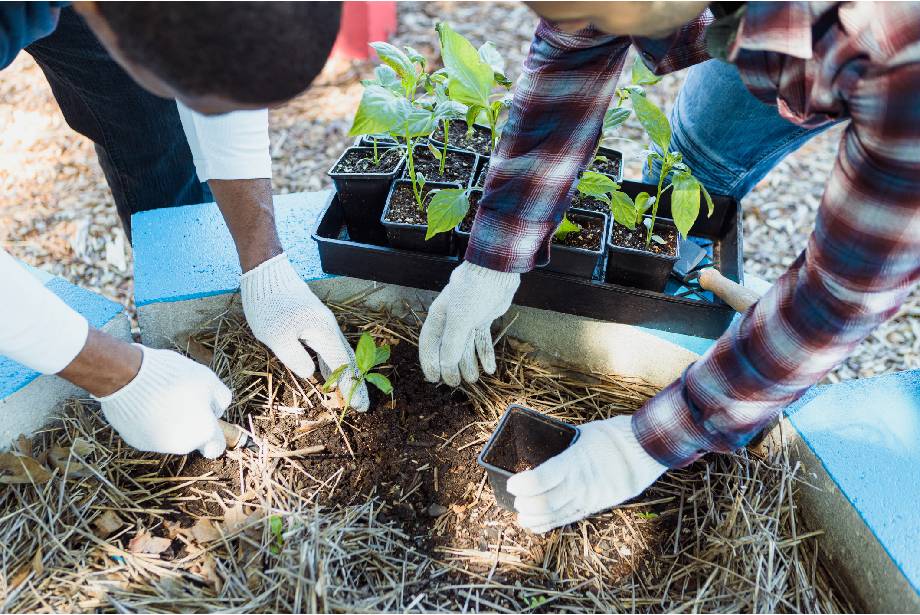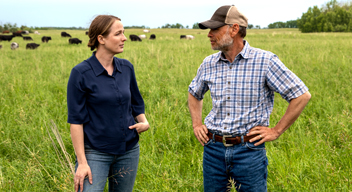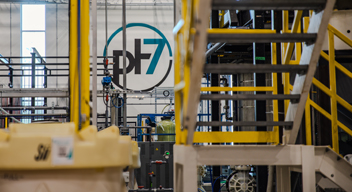As many industries focus on technological acceleration, Indigenous agricultural practices are being integrated across Canada for their benefits to climate and biodiversity.
As of 2023, more than 189,000 farms make up Canada’s agriculture sector, but the largest 10% of these farms produce more than two-thirds of revenue. In 2023, agriculture generated $150 billion, or ~7% of Canada’s gross domestic product (GDP). But despite being original stewards of the land, Indigenous farmers remain under-represented in the industry, operating about 2.1% of farms across the country as of 2021.
While many farms are family-owned with multiple generations working together, today’s farmers face challenges that require unique solutions. These include Indigenous reconciliation, mitigation of the effects of climate change, and support for Canadians living with food insecurity.
One of RBC Foundation’s key new collaborations is with the National Circle for Indigenous Agriculture and Food (NCIAF). The organization advances reconciliation in the Indigenous agriculture and food sectors through connecting Indigenous farmers to community resources, supporting business development, and facilitating hands-on training and knowledge-sharing.
In 2020, the Canadian Agricultural Human Resource Council identified unique challenges faced by Indigenous Peoples in agriculture, such as barriers to capital and financial resources, loss of land ownership, and problems caused by the legacy of residential schools. The NCIAF’s governance helps to ensure an Indigenous-led decision-making approach, involving First Nations, Métis and Inuit chiefs and elders who oversee financing, training and development of the programming.
As a new non-profit organization launched just this year, the NCIAF’s goal is to help Indigenous communities reclaim their role in agriculture through establishing businesses. Their goal is achieve greater food security and sovereignty for Indigenous Peoples.
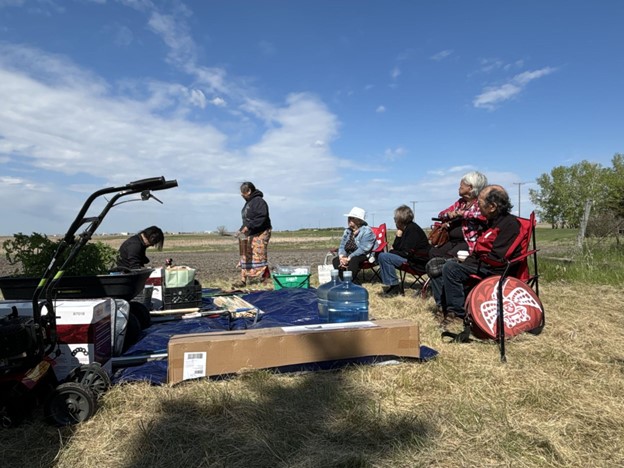
Photo: With support from the NCIAF, the Ochapowace First Nation’s Community Garden connects youth to traditional farming practices while growing produce locally in Saskatchewan.
In Saskatchewan, where the NCIAF is based, agriculture is practiced on three-to-four million acres of First Nation reserve land, but only 20% of that land is farmed by Indigenous Peoples. Keeping in mind that Indigenous families are more likely than non-Indigenous families to be food insecure, working to equip the next generation of Indigenous farmers is important, through community-based training and production.
“There are many facets to agriculture, from the smallest honeybee to the large bison and everything in between. My goal is to bring the spirit and intent of the treaties by bringing farming to First Nations across Canada. First Nations should utilize their lands to be self-sustaining,” said the NCIAF’s Terry Lerat.
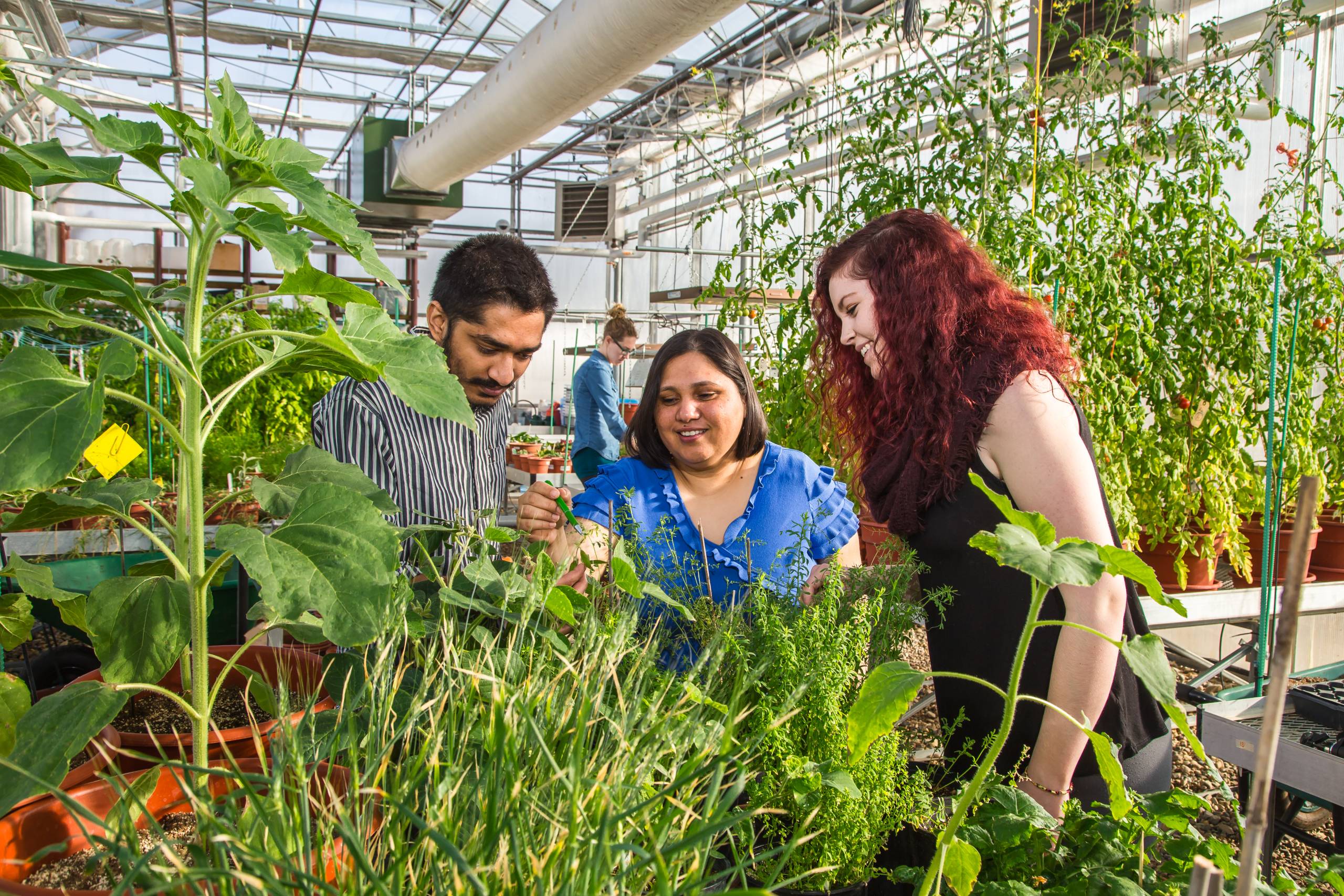
Photo: Assiniboine College students in the school’s sustainable Greenhouse prototype.
Students at Manitoba’s Assiniboine College, where 26% of recent domestic graduates were Indigenous, are also addressing food insecurity. The school’s Greenhouse in a Box prototype is a free-standing, transportable structure. It’s a type of greenhouse that allows fruit and vegetable production to adapt to almost any location or climate, extending the crop growth season. Horticulture Production and Sustainable Food Systems students will spend the next four years learning how to prepare and grow foods sustainably and will then distribute the structures to under-served communities where produce is limited, helping to make nutritious food more accessible.
Once students have completed the program, they’ll be able to operate the greenhouses themselves. “Greenhouses give us the ability to grow vegetables year-round, so we don’t have to fly them in,” said Karen O’Gilvie, Academic Chair, Russ Edwards School of Agriculture & Environment at Assiniboine. “We’re putting students right in the greenhouse so they’re able to hit the ground running when they enter the labour market.”
At Red Crow College, located on Kainai Nation reserve in southern Alberta, with another campus in Lethbridge, the seven-month Field Study certificate program provides hands-on experience for Indigenous students wanting to train in agriculture and ranching. By teaching students based on values held by the Blackfoot People, Elders lead students through training, guiding them toward full-time employment on local ranches and farms. Blackfoot values include “Kakoysin,” which means being aware of the environment, “Pommotsiiysinni,” which means transferring something to others, and “Aksistoiyipaittapiiysinni,” which means being able to take on tasks independently.
“The first thing we share with our young people is that the land is a source of life for all humanity,” said Elder Calvin Williams, who emphasized the importance of practicing agriculture through Indigenous cultural principles of respect, kindness and being helpful.
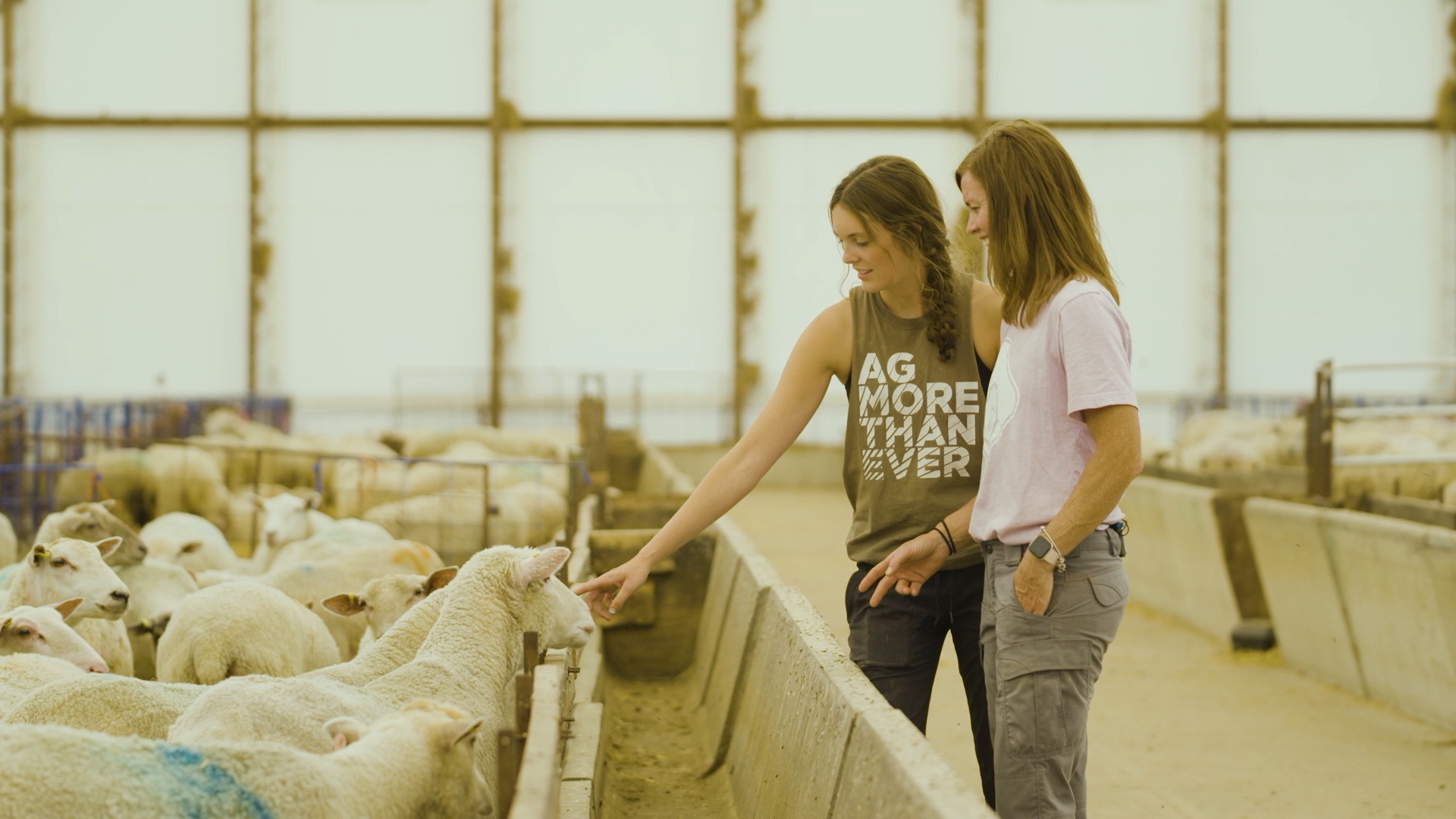
Photo: Producer Sandi Brock (right) and her daughter at their sheep farm, Shepherd Creek Farms. Sandi is featured throughout the University of Guelph’s Foundations in Agricultural Management program’s video modules.
While most of Canada’s farms are based in the Prairies, the University of Guelph is a top-rated agriculture school, located among farmlands in Ontario. Its Foundations in Agricultural Management program launched in 2022. Through module-based learning, participants from the farming community gain improved understanding of key concepts such as risk management, human resources and profitability, allowing them to blend knowledge of farming practices with advanced skills in business.
Offered online, the free program is low-barrier and accessible to agriculture producers who want to not only expand their farming business, but plan for future generations. Part of the program’s focus is on helping farming families through complex discussions about succession planning and ownership transfer. Interim dean and professor John Cranfield explained that the program balances agricultural expertise with accelerated management tools. “We work with people who are on the journey of being sustainable stewards of the environment and having successful businesses.”
Increasing Indigenous people’s participation in agriculture and bridging the gap between Indigenous and non-Indigenous farm operations may boost primary agriculture GDP by $1.5 billion.
This article offers general information only and is not intended as legal, financial or other professional advice. A professional advisor should be consulted regarding your specific situation. While information presented is believed to be factual and current, its accuracy is not guaranteed and it should not be regarded as a complete analysis of the subject matter discussed. All expressions of opinion reflect the judgment of the author(s) as of the date of publication and are subject to change. No endorsement of any third parties or their advice, opinions, information, products or services is expressly given or implied by Royal Bank of Canada or its affiliates.


